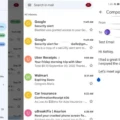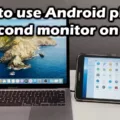Android is a popular operating system used in smartphones and tablets. One of the common issues faced by Android users is the icons on their home screen moving around. This can be frustrating, especially if you have set up your home screen in a particular way. In this article, we will discuss how to keep your icons from moving on Android.
The first step to prevent your icons from moving on Android is to enable the “Lock Home screen layout” feature. This can be done by opening the Settings app on your Samsung phone or tablet and accessing the “Home screen” section. Alternatively, you can pinch the home screen and tap the cog-shaped settings icon. Once in the Home screen settings menu, toggle on the “Lock Home screen layout” option. This feature will prevent any accidental dragging or rearranging of icons on your home screen.
If you have already enabled the “Lock Home screen layout” feature and your icons are still moving around, then you may need to reset your home screen layout. To do this, go to Settings > Applications > Running Services, and then click the “All” tab. Scroll down to TwLauncher and clear the data. This will reset your icons, so make a note of where you have placed them before resetting your home screen.
Another way to prevent icons from moving on Android is to use the screen pinning feature. This feature allows you to lock a specific app on your screen, preventing accidental swipes or taps that may move your icons around. To enable screen pinning, go to Settings and select Security or Biometrics and Security> Other security settings. Scroll down to Advanced and select the toggle next to Pin windows. Turn on the Screen pinning toggle switch to enable screen pinning.
In addition to these methods, there are other Android security features you can use to protect your home screen layout. For example, you can enable the “Ask for PIN before unpinning” feature, which requires a PIN or password to unpin a pinned app. To enable this feature, go to Settings and tap on “Security & Location.” Tap “Advanced,” then “Screen Pinning.” Toggle Screen Pinning to the “on” position, then toggle “Ask for PIN before unpinning” to “on” as well.
There are several ways to keep your icons from moving on Android. Enabling the “Lock Home screen layout” feature, resetting your home screen layout, using screen pinning, and enabling other security features can all help prevent the accidental rearranging of icons on your home screen. By taking these steps, you can ensure that your home screen remains organized and functional.

How Do I Lock Android Icons In Place?
To lock Android icons in place, you can follow these steps:
1. Open the Settings app on your Android device.
2. Scroll down and select “Apps” or “Applications,” depending on your device.
3. Tap the three-dot menu icon in the top-right corner of the screen.
4. Select “Home Screen Settings” or “Home Screen.”
5. Look for an option that says “Lock Home Screen” or “Lock Layout” and toggle it on.
6. Once enabled, your icons will be locked in place and can’t be moved unless you turn off the lock feature.
Alternatively, you can long-press on an empty area of your home screen, select “Home Screen Settings” or “Settings,” and follow the same steps as above to enable the lock feature.
By locking your Android icons in place, you can prevent accidental rearrangement of your home screen and keep your device organized according to your preferences.
Why Do My Apps Keep Rearranging Themselves Android?
There are a few reasons why your apps may keep rearranging themselves on an Android device. Here are some possible causes:
1. Launcher settings: The launcher on your Android device is responsible for displaying the apps on your home screen. If the launcher settings are not configured properly, it may cause the apps to rearrange themselves. For example, if you have set your launcher to automatically sort apps alphabetically, any new app you install will be added to its respective alphabetical order, which can cause the apps to shift around.
2. App updates: When you update an app, it may change its icon or size, which can cause the app to move to a different location on your home screen.
3. Third-party apps: Some third-party apps may interfere with your launcher settings and cause your apps to rearrange themselves. For example, a battery-saving app may close your launcher in the background, causing it to restart and rearrange the apps.
4. Corrupted data: If the data associated with your launcher or home screen is corrupted, it may cause the apps to rearrange themselves. Clearing the data associated with your launcher or home screen may fix this issue.
To prevent your apps from rearranging themselves, you can try the following solutions:
– Lock your home screen: Some launchers allow you to lock your home screen, which prevents any accidental changes.
– Disable auto-sorting: If your launcher automatically sorts apps, you can disable this feature to prevent any unwanted changes.
– Reinstall your launcher: If your launcher is causing the issue, try reinstalling it to see if it fixes the problem.
– Clear data: If the issue persists, try clearing the data associated with your launcher or home screen to reset it to its default settings.
How Do I Lock Apps Not To Move?
To lock apps and prevent them from moving on your Android device, you can use the screen pinning feature. First, open the Settings app on your device and select the Security or Biometrics and Security option. From there, scroll down to the Advanced section and choose the Other security settings option. Next, select the toggle switch next to Pin windows to enable this feature.
Once you have enabled pin windows, you can proceed to turn on the Screen pinning toggle switch. This will allow you to pin a specific app to the screen, preventing it from being moved or closed accidentally. To pin an app, simply open it and then tap the Overview button (usually represented by a square icon) on your device. From there, you should see an option to Pin the app to the screen. Select this option, and the app will be pinned to the screen until you unpin it.
If you need to switch to a different app while the pinned app is still open, you can do so by pressing and holding the Overview button and selecting the other app you want to use. To unpin the app and return to the home screen or another app, simply press and hold the Back and Overview buttons at the same time.
How Do I Lock Apps On My Screen?
To lock apps on your screen, you can use the built-in screen pinning feature on your Android device. To enable this feature, go to Settings and tap on “Security & Location.” From there, tap “Advanced,” then “Screen Pinning.” Toggle Screen Pinning to the “on” position, then toggle “Ask for PIN before unpinning” to “on” as well.
Once you have enabled screen pinning, you can lock an app on your screen by opening it and tapping the “Overview” button (the square one) at the bottom of your screen. From there, simply swipe up on the app you want to pin, and then tap the “Pin” icon that appears in the bottom right corner of the app.
To unpin the app, tap and hold the “Back” and “Overview” buttons simultaneously until the app unpins. If you have enabled the “Ask for PIN before unpinning” option, you will be prompted to enter your PIN before the app can be unpinned.
Using screen pinning is a great way to prevent others from accessing your sensitive apps without your permission. It can also be useful when handing your phone to someone else to use, as it ensures that they can only use the app that you have pinned to the screen.
Conclusion
Android is a powerful and versatile mobile operating system that offers a wide range of features and functionalities to users. With its intuitive interface, customizable settings, and vast app library, Android has become one of the most popular OS choices for smartphone and tablet users worldwide. Whether you’re looking to improve your productivity, stay connected with friends and family, or simply stay entertained on the go, Android has something for everyone. By following the tips and tricks outlined in this article, you can make the most of your Android device and enjoy a seamless and enjoyable mobile experience. So, whether you’re a seasoned Android user or just getting started, there’s never been a better time to explore all that this incredible platform has to offer.








